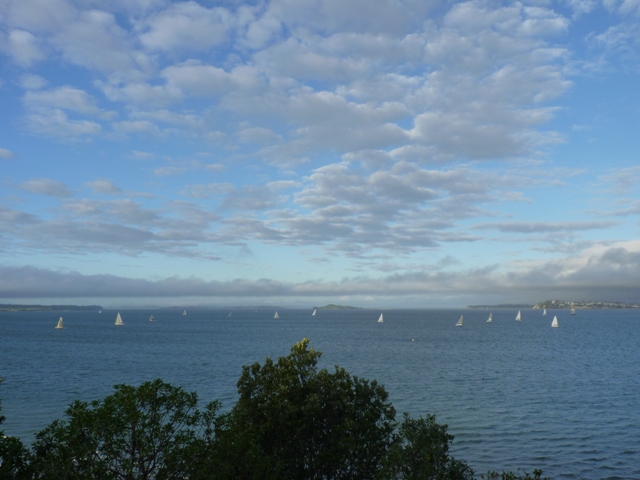Historic Marine Protection Act Triples Safeguards for Hauraki Gulf Ecosystem
The Hauraki Gulf / Tīkapa Moana, a jewel of New Zealand’s North Island coastline, has faced extensive environmental challenges from overfishing, pollution, and habitat degradation.

- Country:
- New Zealand
New Zealand has taken a landmark step toward reversing decades of marine degradation in one of its most treasured coastal regions, with Parliament passing the Hauraki Gulf / Tīkapa Moana Marine Protection Act. Conservation Minister Tama Potaka hailed the legislation as a “bold new era” for ocean conservation, setting the stage for the largest expansion of marine protection in over a decade.
“For years, communities and people across the political divide have despaired at the effects of the Gulf’s long-standing ecological decline leading to desolate kina barrens and habitat loss,” Mr Potaka said. “Today, National has delivered the biggest new marine protection area in more than a decade for Aotearoa New Zealand.”
A Generational Turnaround for a Declining Ecosystem
The Hauraki Gulf / Tīkapa Moana, a jewel of New Zealand’s North Island coastline, has faced extensive environmental challenges from overfishing, pollution, and habitat degradation. The new Act aims to nearly triple marine protection, establishing 19 new protection areas across 800 square kilometres of ocean.
These High Protection Areas (HPAs) will restrict most forms of commercial and recreational fishing, allowing marine ecosystems to regenerate. Limited ring-net fishing for common species will be permitted in only 3% of the protected zones, subject to a three-year review.
Mr Potaka described the law as “a once-in-a-generation step to turn around the health of the Gulf,” envisioning a future where fish stocks like tāmure (snapper) and kōura (rock lobster) rebuild and kelp forests return to support rich underwater biodiversity. “Imagine children fishing off an Auckland wharf into waters once again thriving,” he said.
Expanding Goat Island’s Legacy
A significant feature of the Act is the tripling in size of the Goat Island / Te Hāwere a Maki Marine Reserve, the world’s first marine reserve, established 50 years ago in 1975. Once a barren coastline, Goat Island is now a living marine classroom, attracting over 350,000 visitors annually and producing ten times more snapper than surrounding coastal waters.
By expanding its boundaries, the government aims to extend its proven ecological benefits to a wider area and strengthen its role as a symbol of marine regeneration and public engagement in conservation.
Environmental, Cultural, and Economic Balance
The new legislation represents a delicate balance between ecological restoration, community livelihoods, and economic opportunity. According to a study by the New Zealand Institute of Economic Research (NZIER), the Hauraki Gulf contributes an estimated $100 billion to the national economy, driven by tourism, recreation, aquaculture, and fisheries.
Recognising this value, the government aims to ensure the Gulf remains both a biodiversity haven and an economic driver. “The legislation ensures we balance the needs of communities, the environment, and the economy,” Mr Potaka said.
Protecting and Monitoring the Gulf’s Future
A dedicated team of Department of Conservation (DOC) Marine Rangers has already begun patrolling the Gulf, tasked with educating the public, ensuring compliance with new regulations, and monitoring ecological recovery.
The Act builds upon years of advocacy and collaboration, tracing its origins to the 2013 Sea Change Project—a long-term initiative that brought together iwi, conservation groups, local authorities, and marine scientists to design a shared vision for the Gulf’s future.
Minister Potaka acknowledged the contributions of the Hauraki Gulf Forum, iwi including Ngāi Tai ki Tāmaki, and numerous conservation advocates for their persistence in bringing the reform to fruition.
Future Investments and Commitments
The government plans to complement the Act with further investment through the International Visitor Levy, directing additional funds to restoration and protection efforts in the Gulf. Details of this initiative are expected to be announced soon.
The new legislation will come into effect before the end of the year, marking a pivotal moment in New Zealand’s environmental policy. For many, it represents a renewed national commitment to ensuring that Tīkapa Moana / Hauraki Gulf remains a thriving marine sanctuary for future generations—an enduring symbol of balance between nature, people, and progress.
ALSO READ
KSPCB Cracks Down on Kannada 'Bigg Boss' Studio: Environmental Regulations Breached
Green Light for Waste Facilities: Environmental Clearance Exemption Proposed
Bigg Boss Kannada Set Sealed Over Environmental Violations
Ramayan: A Symbol of Social Values and Environmental Protection
Haryana's Strides in Crop Residue Management: A Model for Environmental Sustainability










